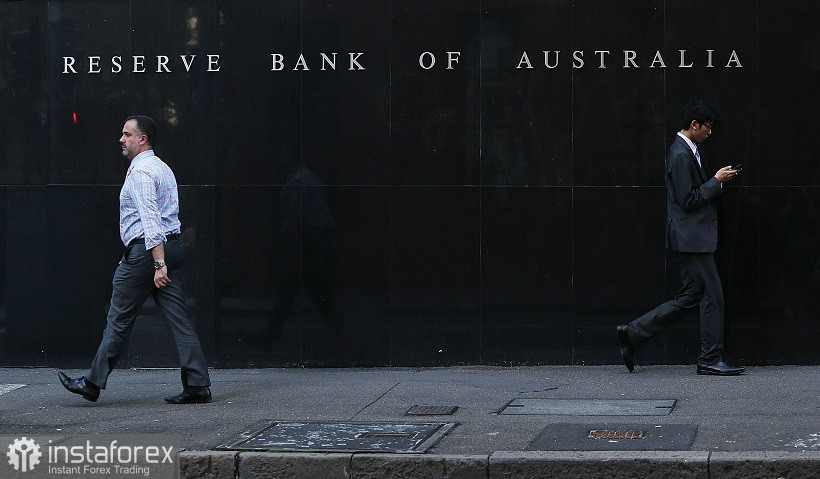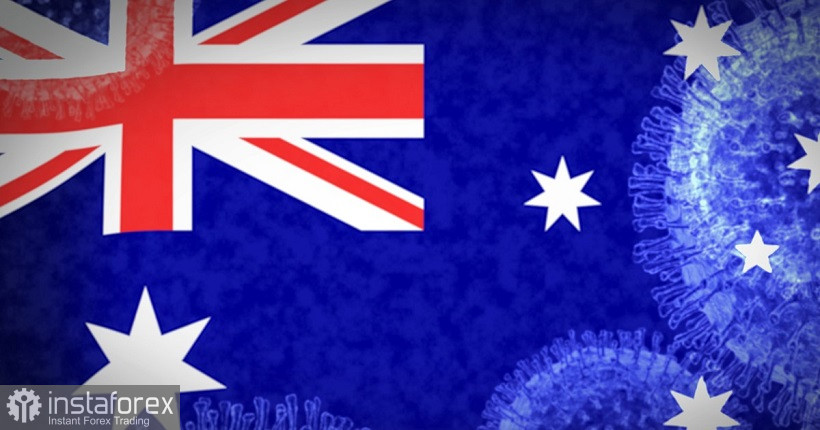The Reserve Bank of Australia gave the Australian dollar unexpected support. The Central Bank voiced quite optimistic rhetoric during its December meeting, despite a significant slowdown in the labor market and the spread of a new strain of coronavirus. Before the December meeting, some experts assumed that the regulator would take either a cautious wait-and-see or pessimistic-dovish position, due to the array of accumulated problems.
But in reality, the RBA has taken an optimistic and wait-and-see position, allowing us to assume that the Central Bank will either reduce QE or abandon the stimulus program altogether at the beginning of next year. Such an unexpected plot twist provided significant support to the AUD/USD pair, which tested the key support level of 0.7000 on Friday, updating multi-month lows along the way. However, sellers could not break through an important price barrier for the pair. Despite everything, the Australian Central Bank did not let the AUD sink. As a result, buyers not only held the support level but surged, having risen by almost 150 points in recent days. It is noteworthy that not the least role in this was played by the notorious Omicron, which is actively changing its "image".
At first, the Australian dollar took the news quite painfully that a new strain of coronavirus had reached Australia. The country has just completed a series of long lockdowns, after a spring-summer outbreak of morbidity. The harsh quarantine hit the labor market as expected, leveling the long recovery process. In particular, the unemployment rate in October rose to 5.2%, against a more optimistic forecast (4.8%). This is the worst since April of this year: the indicator showed growth after a 10-month consecutive decline. The increase in the number of employed was also disappointing. With a forecast of growth up to 50 thousand, the indicator collapsed into a negative area, decreasing by 46 thousand. This is despite the fact that this indicator also came out in the negative zone both in September and in August.
Omicron's appearance against the background of such trends suggested that the labor market will continue to fall, as the country will again face a series of lockdowns. After all, it was initially assumed that the new strain had learned to "bypass" the immune protection of vaccinated people, thereby reducing the effectiveness of existing vaccines. The gloomy fundamental picture dragged the AUD/USD pair to the price lows of the year, namely to the level of 0.7000.
However, almost simultaneously, the "anchors" of the Australian dollar stopped pulling the pair down. The Reserve Bank of Australia did not meet the expectations of the bears, and Omicron faded into the background.
Summing up the results of the December meeting, RBA's Governor, Philip Lowe, said that the country's economy demonstrates "a very steady pace of recovery after the outbreak of the Delta strain." Moreover, he said that the main positivity now comes from the labor market, where he believes there is a gradual increase in wages. The head of the Central Bank also focused his attention on inflationary trends. He noted that the core inflation rate is kept at 2.1%, and overall inflation barely exceeds 3%, reflecting high gasoline prices and disruptions in the supply chains of goods.
The general tone of Philip Lowe's accompanying statement and rhetoric was unusually optimistic. Following the results of the December meeting, almost all experts of the largest banks said that the regulator is guaranteed to reduce the volume of the incentive program at the next meeting (in February 2022). Some of them even suggested that the Central Bank will abandon QE altogether if key macroeconomic indicators are released in the next 2 months in the "green zone".

Such conclusions supported the Australian dollar. It is also strengthening its position against the background of a decline in anti-risk sentiment in the market. The closer scientists and doctors "get acquainted" with the new strain, the more optimistic words they voice. In particular, doctors from hospitals in the capital of the South African Republic reported that those infected with Omicron carry the infection much more easily than those with the previous variant of COVID-19 (Delta). According to the results of the past few weeks, there have been no more deaths from coronavirus in South Africa, despite the increase in the number of cases of the disease. Against the background of such news, some scientists have started talking about a new stage in the evolution of the coronavirus – in their opinion, Omicron is able to act as a "natural vaccine", since it is more contagious but less dangerous. It is worth noting that optimistic theses are voiced not only by individual virologists or scientists. For example, the chief infectious disease specialist of the USA Anthony Fauci recently stated that the omicron strain "does not lead to a particularly severe course of the disease." In addition, a few days earlier, the World Health Organization reported that no deaths have yet been recorded in the world among those infected with a new Covid strain.
Therefore, the fundamental background of the AUD/USD pair contributes to further upward correction in the medium term. Here, it is necessary to take into account that the Fed will announce the results of its December meeting next week. Given Jerome Powell's hawkish attitude, the US regulator can provide significant support to the US dollar. But within the framework of the current week, the Australian dollar might still have time to prove itself amid a decrease in anti-risk sentiment and the optimistic position of the RBA.
The "ceiling" of the upward correction is the 0.7200 mark – this is the average line of the Bollinger Bands indicator on the daily chart. The Australian dollar can break through this target (and most importantly, consolidate above it) only due to the weakness of the US currency. Therefore, this resistance level is currently the main price barrier.
 English
English 
 Русский
Русский Bahasa Indonesia
Bahasa Indonesia Bahasa Malay
Bahasa Malay ไทย
ไทย Español
Español Deutsch
Deutsch Български
Български Français
Français Tiếng Việt
Tiếng Việt 中文
中文 বাংলা
বাংলা हिन्दी
हिन्दी Čeština
Čeština Українська
Українська Română
Română


